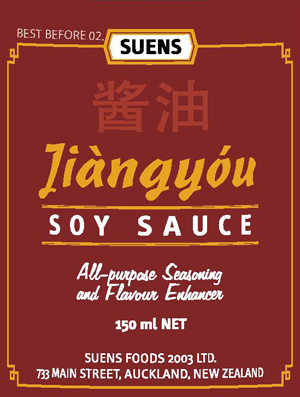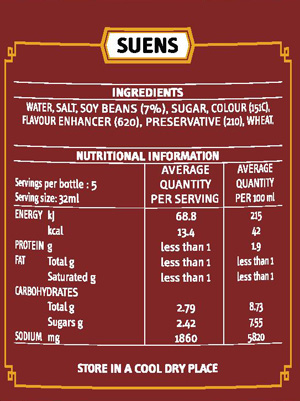Food may not be safe to eat if it is not labelled in the correct way, or has ingredients not allowed in food sold in Australia and New Zealand.
Having the correct label on food sold in Australia and New Zealand means food can be recalled if there are risks to consumers who eat it. For example, if there is an allergen in the food that is not listed on the label, to warn consumers it is in the food.
Who
If you import food for retail sale into Australia or New Zealand, you are a ‘food business’ and legally responsible for the safety and correct labelling of the food you sell*; this includes alcohol.
* ‘Food for retail sale’ means food for sale to the public and includes food prior to retail sale. This includes food at the time it is manufactured or otherwise prepared or distributed where it is intended that no further processing, packaging or labelling will occur prior to sale to the public. Responsibility for labelling food for retail sale lies with the relevant food businesses in the food supply chain, including the manufacturer or importer of the food or the retailer.
What
If you import food for retail sale, you must make sure that the food meets both the compositional and labelling requirements of the Food Act 2008 (WA) (external site), Food Regulations 2009 (WA) (external site) and the Australia and New Zealand Food Standards Code (the Code) (external site).
As a food importer, you must not sell food that:
- Contains ingredients/additives not permitted to be added or which have not been assessed for their safety as a food in Australia/New Zealand (for example some medicinal herbs); and/or
- Is not correctly labelled with the information required by the Code.
If you do, you can face penalties such as prosecution, fines and/or seizure of the food. In some cases, your food may be directed to be destroyed or re-exported.
Note: The Australian Customs and Border Protection Service also has labelling requirements for imported food and beverages. Labels for these products must contain (i) ‘Country of origin’ information and (ii) a true description of the product.
When
As a food importer, you must make sure the food you import contains ingredients/additives that are permitted in Australian/New Zealand before the food is available for sale to the public.
You can do this by getting in touch with your supplier, who may be overseas, and getting ingredient information documents, product specification sheets and sample labels. It is good practice to check both the compositional properties and labelling information against the various requirements with the Code to ensure the food can be legally sold.
How
To check that food for retail sale is compliant with the Code:
- Review ingredient documents and/or a copy of the label from the supplier/manufacturer against the requirements in the Code.
If your importing business doesn’t have the necessary expertise in-house, you may require the services of a suitably qualified expert (for example a lawyer, food consultant or technologist, consulting laboratory, or possibly the supplier or manufacturer of the food).
- If the food does not meet the Code’s compositional requirements ingredients and additives that are permitted, you cannot legally sell it in Australia and New Zealand unless it is reformulated.
If the food does not meet the Code’s labelling requirements, it must be re-labelled to cover the incorrect information before it can be legally sold in Australia and New Zealand. Remember, the required information must be in English and include your business name, and Australian or New Zealand business address.
Why
Government Food Safety Officers (also known as Authorised Officers) have the powers to inspect food businesses and food labels, to check that the food is allowed to be sold in Australian and New Zealand (by looking at the ingredients/additives) as well as other labelling requirements listed in the Code.
If an Authorised Officer finds food that you plan to make available for sale to the public is not labelled correctly, you and/or your business may be prosecuted and/or fined.
Where
The labelling and composition requirements of food sold in Australia and New Zealand are set out in the Code which can be viewed in its entirety on the Food Standards Australia New Zealand (FSANZ) website (external site).
In addition, there is a user guide called 'Overview of Food Labelling' on the FSANZ website (external site) which gives you general advice and points you to other guides which go into more detail about each part of the mandatory labelling requirements.
For more information on the requirements in relation to labelling, please contact the Environmental Health Officer at the local government where the premises are located or the Department of Health Food Unit.

What must be on a food label
If you sell food or food-related products in Australia or New Zealand, you are legally obliged to ensure it meets the labelling requirements set out in the Australia New Zealand Food Standards Code (the Code).
Food labels must:
- tell the truth
- be easy to read
- include the following written in English:
- date marking (for example ‘best before date’) – see Standard 1.2.5 of the Code for full details
- name or description of the food – see Standard 1.2.2 of the Code for full details
- name and physical address of the business (supplier, importer, manufacturer in Australia or New Zealand) – see Standard 1.2.2 of the Code for full details.

Extra information that might need to be on a food label includes:
- warning and advisory statements (for example, allergens – see Standard 1.2.3 of the Code for full details
- ingredients list – (see Standard 1.2.4 of the Code for full details)
- percentage labelling – see Standard 1.2.10 of the Code for full details
- nutrition information panel – see Standard 1.2.8 of the Code for full details
- directions for use and storage – see Standard 1.2.6 of the Code for full details.
- country of origin – Australia and New Zealand have different country of origin labelling requirements. In Australia, packaged and some unpackaged, foods must state the country where the food was made or produced. See Standard 1.2.11 of the Code for full details.
Last reviewed: 02-07-2021
Produced by
Environmental Health Directorate